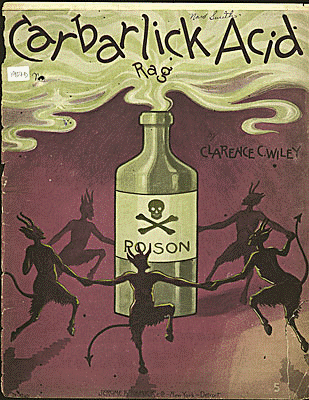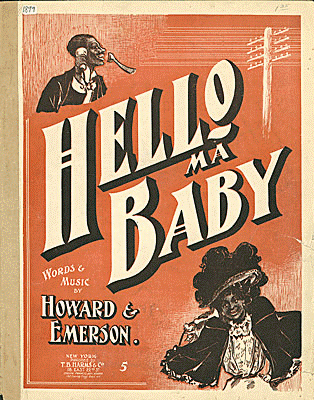By the late 19th century, the music publishing industry had become centered in New York City in a section of Manhattan that came to be called Tin Pan Alley. Tin Pan Alley dominated the musical mainstream, producing music aimed at a middle class and largely white audience. These publishing houses cranked out sheet music en masse, and employed a veritable army of “song pluggers” whose job it was to peddle the songs in department stores and to try to convince singers to include them in their repertoire. On page 34, the textbook provides us with an analysis of one of the first mega-hits of Tin Pan Alley, the 1892 song “After the Ball,” a tune that ultimately sold more than five million copies in sheet music format. Here is a recording of the song from 1929. (This recording omits the second verse, due to constraints on time in early recording formats). Additionally, this cartoon from 1929 features the song’s chorus as an audience sing-a-long. In both of these versions, two things become clear. First, the song was enough of a “classic” to be recorded and featured on film 37 years after its initial publication. Second, the chorus is clearly the money-maker here, as the recording emphasizes it by bringing in backup singers and the cartoon only includes the chorus.
Although Tin Pan Alley produced a number of hits, it is important to note that most of the songs published by the industry had much shorter shelf lives before they were discarded and replaced by the next new song. Many of them likely never turned a profit, but the mega-hits like “After the Ball” made up the slack. The industry dealt with this by churning out as much as possible in the hopes that one of the songs would be a hit. If a particular song didn’t catch on, there was always another one coming out the next week!
Tin Pan Alley was quick to respond to fads and current events, trying to turn a quick profit. For example, in the height of the craze for ragtime music in the early 20th century (particularly following the success of Scott Joplin’s Maple Leaf Rag, which was a rather unlikely hit considering the demands it makes of the performer!), music publishers attempted to capitalize on the craze by flooding the market with “rags” and “ragtime songs” on all manner of subjects (images courtesy of the University of Colorado Digital Sheet Music Collection):

Then as now, eye-catching cover art was a must!

New inventions were always in vogue.

In this song, extolling the newly available telephone, the gentleman asks his “ragtime gal” to “send him a kiss by wire.” Most of us still know this song today thanks to the Looney Tunes cartoon One Froggy Evening
Wolverine Gold